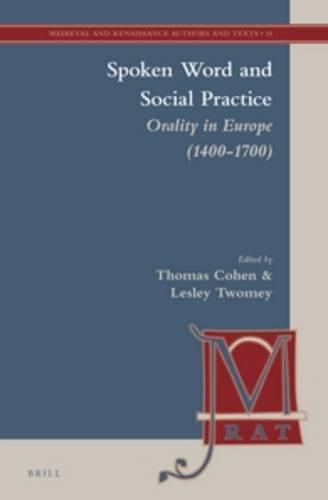Readings Newsletter
Become a Readings Member to make your shopping experience even easier.
Sign in or sign up for free!
You’re not far away from qualifying for FREE standard shipping within Australia
You’ve qualified for FREE standard shipping within Australia
The cart is loading…






Spoken Word and Social Practice: Orality in Europe (1400-1700) addresses historians and literary scholars. It aims to recapture oral culture in a variety of literary and non-literary sources, tracking the echo of women’s voices, on trial, or bantering and gossiping in literary works, and recapturing those of princes and magistrates, townsmen, villagers, mariners, bandits, and songsmiths. Almost all medieval and early modern writing was marked by the oral. Spoken words and turns of phrase are bedded in writings, and the mental habits of a speaking world shaped texts. Writing also shaped speech; the oral and the written zones had a porous, busy boundary. Cross-border traffic is central to this study, as is the power, range, utility, and suppleness of speech. Contributors are Matthias Bahr, Richard Blakemore, Michael Braddick, Rosanna Cantavella, Thomas V. Cohen, Gillian Colclough, Jan Dumolyn, Susana Gala Pellicer, Jelle Haemers, Marcus Harmes, Elizabeth Horodowich, Carolina Losada, Virginia Reinburg, Anne Regent-Susini, Joseph T. Snow, Sonia Suman, Lesley K. Twomey and Liv Helene Willumsen.
$9.00 standard shipping within Australia
FREE standard shipping within Australia for orders over $100.00
Express & International shipping calculated at checkout
Spoken Word and Social Practice: Orality in Europe (1400-1700) addresses historians and literary scholars. It aims to recapture oral culture in a variety of literary and non-literary sources, tracking the echo of women’s voices, on trial, or bantering and gossiping in literary works, and recapturing those of princes and magistrates, townsmen, villagers, mariners, bandits, and songsmiths. Almost all medieval and early modern writing was marked by the oral. Spoken words and turns of phrase are bedded in writings, and the mental habits of a speaking world shaped texts. Writing also shaped speech; the oral and the written zones had a porous, busy boundary. Cross-border traffic is central to this study, as is the power, range, utility, and suppleness of speech. Contributors are Matthias Bahr, Richard Blakemore, Michael Braddick, Rosanna Cantavella, Thomas V. Cohen, Gillian Colclough, Jan Dumolyn, Susana Gala Pellicer, Jelle Haemers, Marcus Harmes, Elizabeth Horodowich, Carolina Losada, Virginia Reinburg, Anne Regent-Susini, Joseph T. Snow, Sonia Suman, Lesley K. Twomey and Liv Helene Willumsen.